Deepest midwinter on St Stephen’s Day. Covehithe cliff top, Suffolk, 26 December 2024
Hello and welcome to the first Bracken & Wrack of 2025. Happy New Year!
Well, I’m not sure whether to call this a late New Moon edition or an early Full Moon one (or should that be the other way around?). Suffice to say that during the month of December - in traditional seasonal fashion - everyday routine has been turned upside down and glorious misrule has reigned. That, of course, has made writing and the quiet focus on the feel of the season more tricksy and liable to slip through the fingers. But on the other hand it’s been a wonderfully joyous time with lots of tiny adventures and new threads to follow that I’m looking forward to sharing with you here in future editions of Bracken & Wrack. Hopefully you’ll feel it’s worth the bit of chaos it takes to get there.
Meanwhile, a walk along the lane to Crow Wood yesterday was illuminated by the soft grey light of midday in early January. Now and again the sun emerged and I even felt a little warmth through my leggings. Well, through the black sections of the tie-dye anyway, and very welcome it was too. Treading the familiar paths over the damp compost of old leaves, bracken and birch bark, I revelled in their pale copper-and-silver magic. But something was different. The light had changed.
Crow Wood, 2 January 2025
Reaching the middle of the wood - you know, the part where pine needles and cones trickle down and the scent turns sweetly resinous - there were gaps in the canopy. Splintered trunks and branches lay everywhere, showing exactly where they had come crashing down. The story told itself. Mighty winds must have gusted through Crow Wood over the weekend, catching one specific area in their grip and felling mature trees like matchsticks. Those pines and birches hadn’t been uprooted. Just literally snapped off and sent sprawling across their companions which were themselves cracked open by the impact. The sound must have been almost beyond belief.
Bleached cone lodged in pine, Crow Wood, Norfolk, 2 January 2025
I’m sad for the trees, but at the same time it’s yet another illustration - if one were needed - that nature can’t be tamed nor yet reasoned with. It just is. We can only marvel at its power. Soon after the initial shock I was able to reflect with a sense of cyclicity that the light gained will allow other species to thrive, the rotting wood will feed and shelter other organisms and who knows, perhaps some of the fallen wood will eventually come home to the cottage to warm our hearth.
Heart of the cottage, our wood stove
In this edition of Bracken & Wrack:
Signs of the Season in Crow Wood
The Deft Flick of a Tail: freshwater mermaids & mermen
Poetry by Laurie Lee
Have You Seen Our Wren? a Boxing Day tradition re-envisioned
At St Peter-on-the-Wall - a poem inspired by this ancient place
St Cedd’s Epiphany Cake
THE DEFT FLICK OF A TAIL: freshwater mermaids & mermen
‘Merfolk are important to the magic of most places with an abundance of water, and Norfolk is no exception. Every mere in the Brecks, every stretch of Broadland’s waterways and all along our long coastline there are Mermaids or Mermen to be found. However, they are mostly shy, sensitive beings …’
Val Thomas, Of Chalk and Flint: a Way of Norfolk Magic
Where would you look for a mermaid?
Despite its wateriness, Norfolk is not well endowed with holy wells or springs. Scanning a map will reveal only a handful in the whole county. But marked on a map or not, early Christian warnings about eating or drinking with the spirits or ancestors at trees, wells and springs suggest that a named landscape feature could indicate a site that has been special for hundreds, if not thousands, of years.
As soon as I saw the named spring ‘Mermaid’s Head’ on the local OS map I was desperate to go and find it - and it was only a few miles away!
So, one sunny New Year’s Eve, I set off by bike along the old railway track with my trusty flask. Once I had left the track for foot and bridle paths, the going became much rougher and a tiny bit of trespassing may have been involved. Eventually I reached the edge of the wood where, according to the map, I would find the Mermaid’s Head, source of the Mermaid River. And, pushing through the brambles, I did. There was no mistaking it.
What I saw was a small pool between the trees, cloudy where mud had been disturbed by the gentle bubbling of the spring. With a clear blue sky sending reflections dancing across the pool it was a truly magical place where you half expected to witness the deft flick of a tail or to glimpse trailing strands of weedy hair.
In The Devil’s Plantation, Nigel G Pearson tells us that Norfolk mermaids inhabit rivers and pools as much as the sea, their name deriving from mere-maid or mere-wif. Although in folklore they are wily beings, always ready to drag the unwary into their watery habitation, Nigel speculates that they may actually be a distant memory of revered water spirits.
And, I whispered to myself as I opened the coffee-flask beside the spring, maybe not such a distant memory. - 2 January 2022
NB: Since I first wrote this we’ve discovered - and visited - several Norfolk holy springs and wells or their former sites that I hadn’t been aware of. They are there to be uncovered, and who knows how many more still lie unrecorded?
Mermaid’s Head spring, Marsham, Norfolk, on a sunny New Year’s Day
(Click ‘play’ to hear an audio version of ‘Twelfth Night’ by Laurie Lee)
No night could be darker than this night, no cold so cold,
as the blood snaps like a wire
and the heart’s sap stills,
and the year seems defeated.
O never again, it seems, can green things run, or sky birds fly,
or the grass exhale its humming breath powdered with pimpernels,
from this dark lung of winter.
Yet here are lessons from the final mile of pilgrim kings;
the mile still left when all have reached their tether’s end: that mile
where the Child lies hid.
For see, beneath the hand, the earth already warms and glows;
for men with shepherd’s eyes there are signs in the dark, the turning stars,
the lamb’s returning time.
Out of this utter death he’s born again,
his birth our Saviour;
from terror’s equinox, he climbs and grows, drawing his finger’s light
across our blood — the sun of heaven and the son of God.
Laurie Lee, ‘Twelfth Night’
Winter sun in the reeds, How Hill, Norfolk, 30 December 2024
HAVE YOU SEEN OUR WREN?
Boxing Day 2025 - the feast day of Saint Stephen
As we emerged into a pool of light outside the village hall, the first indication that something out of the ordinary might be afoot was the sight of a woman dressed in a green cloak, head completely enveloped in a sphere of ivy. Her whole face was painted in the same green except for her shining eyes illuminating the dark.
More light, and the murmur of voices from inside the hall drew us through the door, where we were greeted by warmth, and excited buzz and already so many people that it took a while to navigate through to the back where a group of timelessly-attired agricultural workers stood in animated conversation. Waistcoats, best jackets, bowlers or fedoras, red and white neckerchiefs, high waistbands and good boots. Their faces were all painted in a deep grey that looked almost green amidst all the ivy. Many sets of piercing eyes glinted unnervingly from within.
On occasion they broke from their own conversations to engage with those gathered in clusters, and gradually I took in more of my surroundings. Why had I not noticed the huge ball of ivy, woven with a opening just right for a bird to slip - or be slipped - into? Crowning a pole, a flock of brown and green ribbons fluttered beneath its tendrils. Later we learned that two of the ribbons were white and therefore colourless ‘for the Covid years’. On a lectern stood a book, opened at the story of the Cutty Wren and its tie with the village of Middleton in Suffolk. In other words, the very land on which we stood.
‘Have you seen our wren?’ came a voice from just above me. I looked up quickly, straight into a knowing face. His eyes twinkled disconcertingly through their dark mask. ‘In a hole, in the ivy’. At this point I hadn’t even noticed the ivy sphere, let alone its opening but, intrigued, I stretched up to peep inside. With the help of a zoom lens I just managed to catch a glimpse of russet deep within.
Then, as I wove my way back down the hall, the same voice floated towards me - ’Did you see the wren?’
‘Oh yes!’
This tiny carved bird was clearly the star of the event. But knowing the magic that music and rhythm add to ritual, my heart leapt at the sight of the broomstick that one of the ivy women had carried in. Crowned with another carved wren, it had been transformed into a jingling pole set all around with bunches of beer bottle tops on long nails.
A memory flashed across my mind of my mum making something similar when I was little, but how would she have acquired the bottle tops? My parents weren’t exactly big drinkers. They always bought in a few bottles of wine and spirits ‘for Christmas’ but would never remember to open them and there they would sit until the next festive season rolled around.
Other wooden percussion instruments were tucked behind the jingle-stick and beside it, propped against the wall, stood an old washboard. I could tell there would be a fine lot of noise even without the drum, recorders and accordions brought in by other women, their green faces almost entirely hidden by hoods and greenery.
There was a hush and everyone looked towards the huddle of dark faces over the bright red-and-white flashes of their neckerchiefs. The time had arrived and the Molly Dancers were ready. Old Glory’s spokesman said a few words about the origins of this St Stephen Day’s ceremony. Well, as far as is known. Its roots in seasonal sacrifice could be incredibly ancient as could the story of Saint Stephen himself, martyred this day through the casting of stones. Sad to say, traditionally it was the wren that was hunted and killed on this day, its little body taken around the village for a quick peep in return for money or food.
Top: St Stephen and the stones with which he was martyred, on the 14th century rood screen at Hempstead Church, Norfolk. Below: ‘Saint Stephen’, Magpie Lane
The traditional Cutty Wren song - which has been recorded by more of our favourite folk artists than I’d realised - followed in call and response between the Old Glory dancers and musicians. There was something familiar and haunting about it; the words on the one hand mysterious in meaning and yet offering a clear allegory about re-distribution of wealth to the poor.
Later, I was to read that the song is believed to have related to - or even been sung by -insurgents during the Peasants’ Revolt of 1381. Indeed, the words may have been recited like a magical charm or totem to keep up the men’s faith and resolve in their shared cause.
‘The Cutty Wren’ - this is Damh The Bard’s version
Candle lanterns lit and held high - no electric torches permitted, which made it even more magical - the silent procession followed the blazing flares carried by members of Old Glory, the bobbing sphere carrying the evening’s tiny treasure darkly visible between them.
Having already made our way from The Bell, where we’d eaten our picnic in the van after a shandy by the pub’s welcoming hearth fire, we knew where we were going. Most of the cottages were decked with fairy lights and afforded a glimpse into cosy sitting rooms. At some, the inhabitants gazed from within or stood in their doorways.
By the time that our snaking segment had reached the pub forecourt and the band had struck up the crowd was too deep for a proper view of the dancers, nor of the green musicians. But by holding my phone aloft I found I could actually see the action and not just hear and feel it. Miraculously it seemed, as the audience shifted its feet, so gaps and cracks emerged for us to slip between and somehow find ourselves in the front row.
Leaping through the haze cast by the blue lights strung across the front of The Bell, the Molly Dancers swung around in small galloping circles or a single steady ring. Some dances required a double line, all raised knees and wild plunges. Some of the men would always stand back and turn to lock gazes with individual members of the crowd, staring intently with eyes that gleamed in the light of the flares.
Once, gardens might have been mysteriously ploughed up in the night if their owners failed to yield to the Wren Boys’ demands for money and refreshment.
Today it’s a bit of fun and a means of raising money for charitable causes but hanging in the air is a subtle reminder of the time when there was good reason for disguise and painted faces. And in line with tradition, one of Old Glory’s number is a Shemale - a male dancer dressed in the green floor—length dress and cap of a Victorian woman. With the grizzled hair and beard of the wearer, the effect was striking.
During one of the dances, an Old Glory Wren Boy brought around two wooden jig dolls on handles to tap out a dance to the rhythm of the music. As we were by now in the front row, my palms were among those eagerly outstretched, ready to act as the jointed figures’ step-board for a few hops and jumps.
After the last dance was danced, we were called in to participate ourselves. Everyone joined hands to be shown the steps. One two three hop one two three hop; closer and closer drew the spiralling ring to the wren’s cage-nest, ivy spilling wildly around its edges as its supporting pole was borne by one of the men. When the rings could be drawn no tighter everyone fell away, laughing, ceremony complete. The Day of Saint Stephen marked once more, adding yet another layer of rich memory to the tradition, the age of which no-one can quite pinpoint. Old Glory revived - they say ‘re-envisioned it’ over 30 years ago and hearteningly for folk-tradition it has grown and grown.
Now it was time to re-enter The Bell through the wide wooden door to the wood-stove’s warmth and the aroma of beer, many pints of which must already have been pulled. The hum subsided as one of Old Glory expounded the Tale of the Wren and how he earned the title of King of the Birds. It’s a much-repeated story, familiar in essence yet this rendition, in this place, was especially gripping and timed to perfection.
With the luck that seemed to be with us that evening we were able to beat a path straight to the bar. No sooner were the pints of shandy in our hands than we found ourselves pressed back against the woodwork as the dancers got into position in what was surely an impossibly small space. Undaunted, the band took up their instruments and the dance continued in wild circles. So close did the dancers spin that I was almost taken up into the whirl myself. When the caper was done there were songs, each led by a different member of Old Glory or their friends.
It was the sort of evening you might imagine could never happen again. Perhaps, the closest echo of the real thing that we can hope to experience in a world so far removed from the old ways of the land and its folk. A glimpse of the days when communities made their own impromptu entertainment with a sense of release and a shared understanding. When there was no question but that the Day would be marked in right and proper manner.
And later, when the stars gleamed frostily, the barrel taps were stopped for the night and the revellers left wearily for their beds, the jig dolls would be tenderly laid in their box, neckerchiefs folded and faces scrubbed as the farmhands, horsemen and gardeners found themselves standing again in the mundane world.
For a little while, anyway.
(Click for an audio version of the poem.)
AT ST PETER-ON-THE-WALL, ESSEX (FOUNDED c. 654)
Three stones hold up the wounded slab.
Touch them and you touch Cedd
that Celtic mystic
you will know by his signs:
shaven forehead, long hair flowing
in the Essex wind.
The liminal shore
Othona.
Romans pacing the edge
holding close their deities
Epona maybe as they were horsemen.
Steeds stamped here
manes and tails streaming
in the Essex wind.
After the jingle and clatter
of harness and hooves came Cedd
in his rough white habit.
A life of simplicity,
stripped to the bones -
well, here that’s not hard to imagine.
Blackthorn fingers prick the wind
Sloe-knuckles knock and rattle
while the chapel stretches to a sky
that leadens and lightens
mottles and streaks
changing with every wisp of wind
so that you could stare all day.
Did Cedd gaze as we did
while he wandered barefoot
among whelks, clams and oysters
palely gleaming under the full moon
with a shhh and a sharp little crack
as his heel touched a brittle edge?
Imogen Ashwin (3 January 2025)
Ancient chapel of St Peter-on-the-Wall, Essex, 31 December 2024
ST CEDD’S EPIPHANY CAKE (vegan)
It’s questionable indeed as to whether Cedd would have had access to these ingredients, nor the means to bake them. But the concept of Twelfth Night or Epiphany Cake - also known as King Cake or Galette des Rois in honour of the Three Wise Men - is very old, as is the custom of baking a small token within, to be found by one of those partaking of it.
As I delight in discovering vegan versions traditional seasonal foods, I was excited to try this recipe, tweaked from one I found online. It’s very easy and I hope you’ll enjoy it. You still have a day or two until 6 January, or why not wait 13 days and mark the Julian Calendar date of Ephiphany on 19th?
60g golden caster sugar
40ml extra virgin olive oil
50ml liquid from a tin of chickpeas (aquafaba)
pinch salt
1 tbsp cornflour
zest of an orange
1 tsp vanilla paste or extract
125g ground almonds
320g vegan puff pastry sheet
Whisk sugar, oil, aquafaba, vanilla and salt in a bowl. Add cornflour and whisk again until lump-free. Stir in orange zest and ground almonds.
Oven 180C. Unroll the pastry and roll it a little larger on its backing sheet so you can cut 2 x 20cm circles using a plate or similar.
Spread the almond mixture on one of the rounds (still on its backing) to 1.5cm from the edge all round. Place the other round on top and seal the edges, crimping with fingers and knife if you can. Optionally, score a pattern of zig zags or a spiral and brush with almond milk and 1 tsp maple syrup to glaze.
Bake for 30 minutes, and give another 5 minutes if it’s not golden brown. Leave to cool slightly before cutting - serves 8
If you wish you can insert a dry bean or some other token and the finder is king or queen for the day!
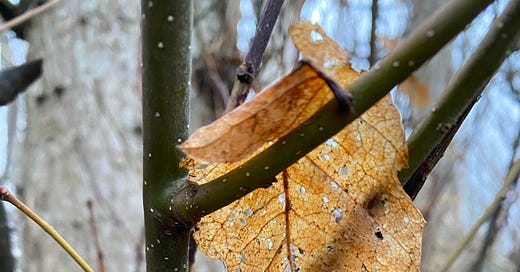






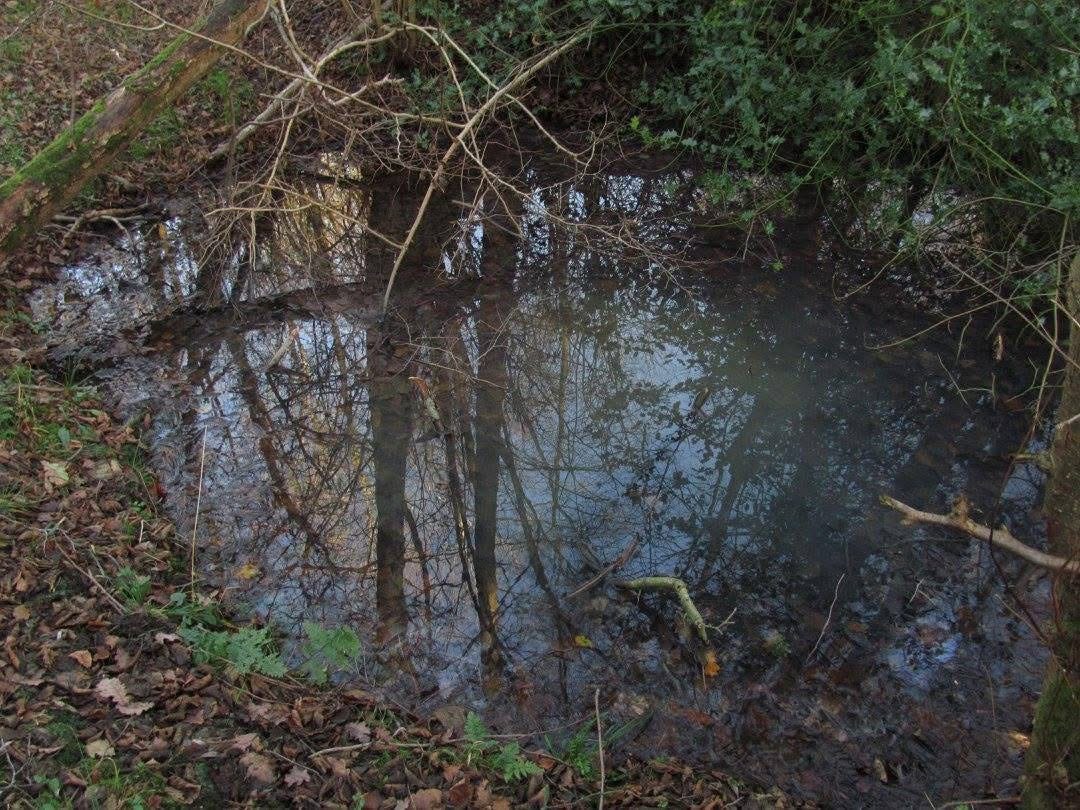


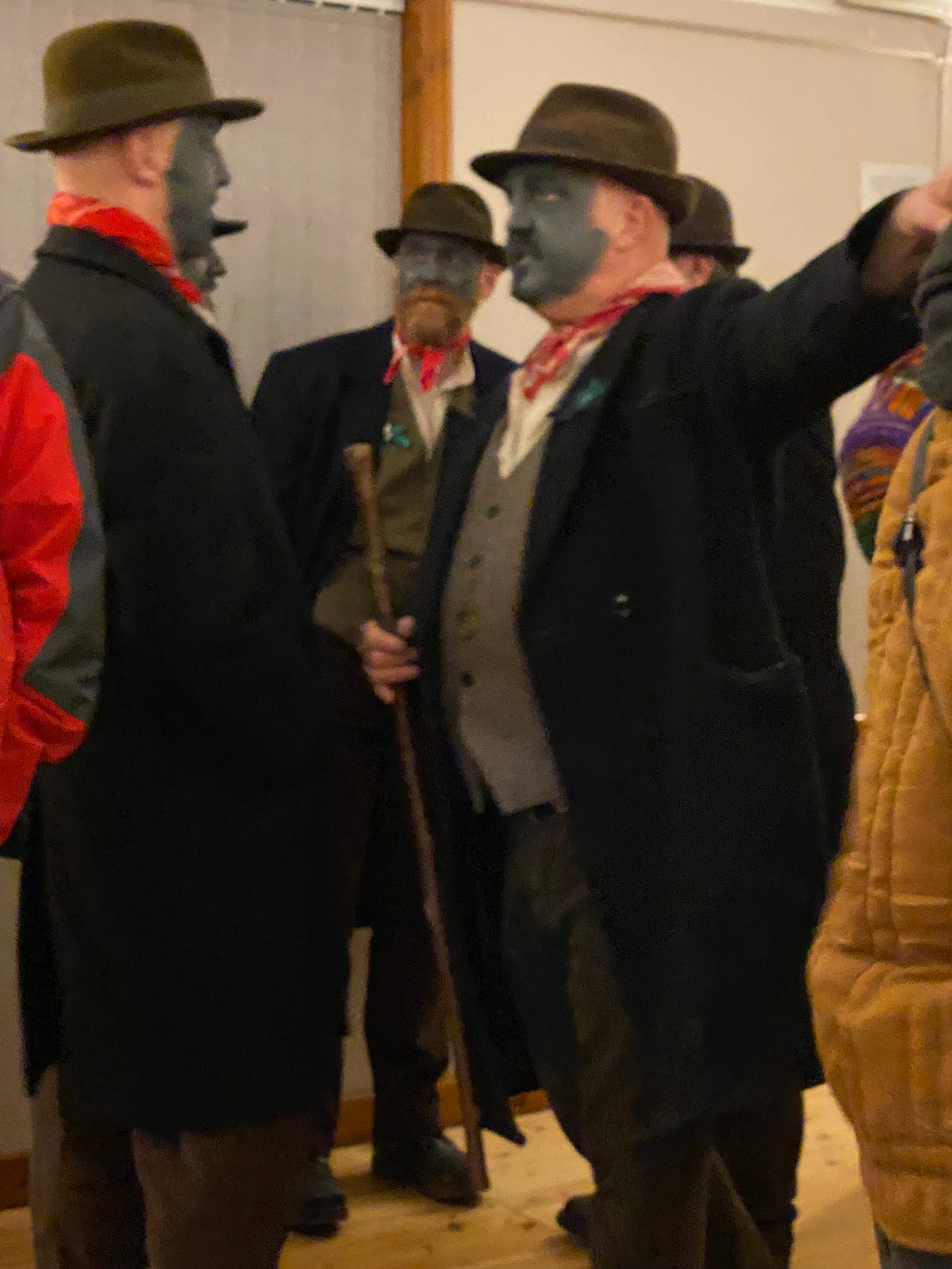
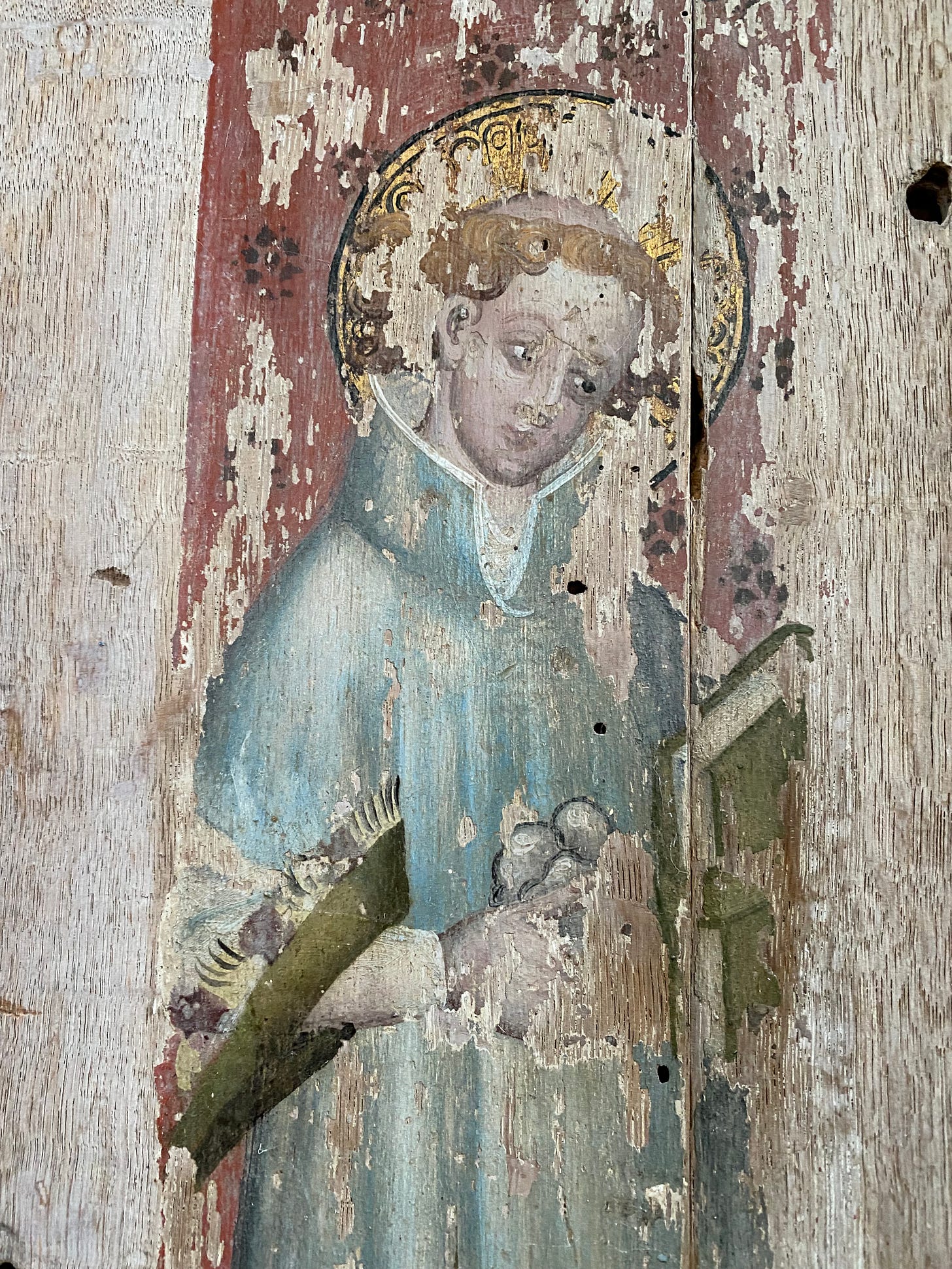
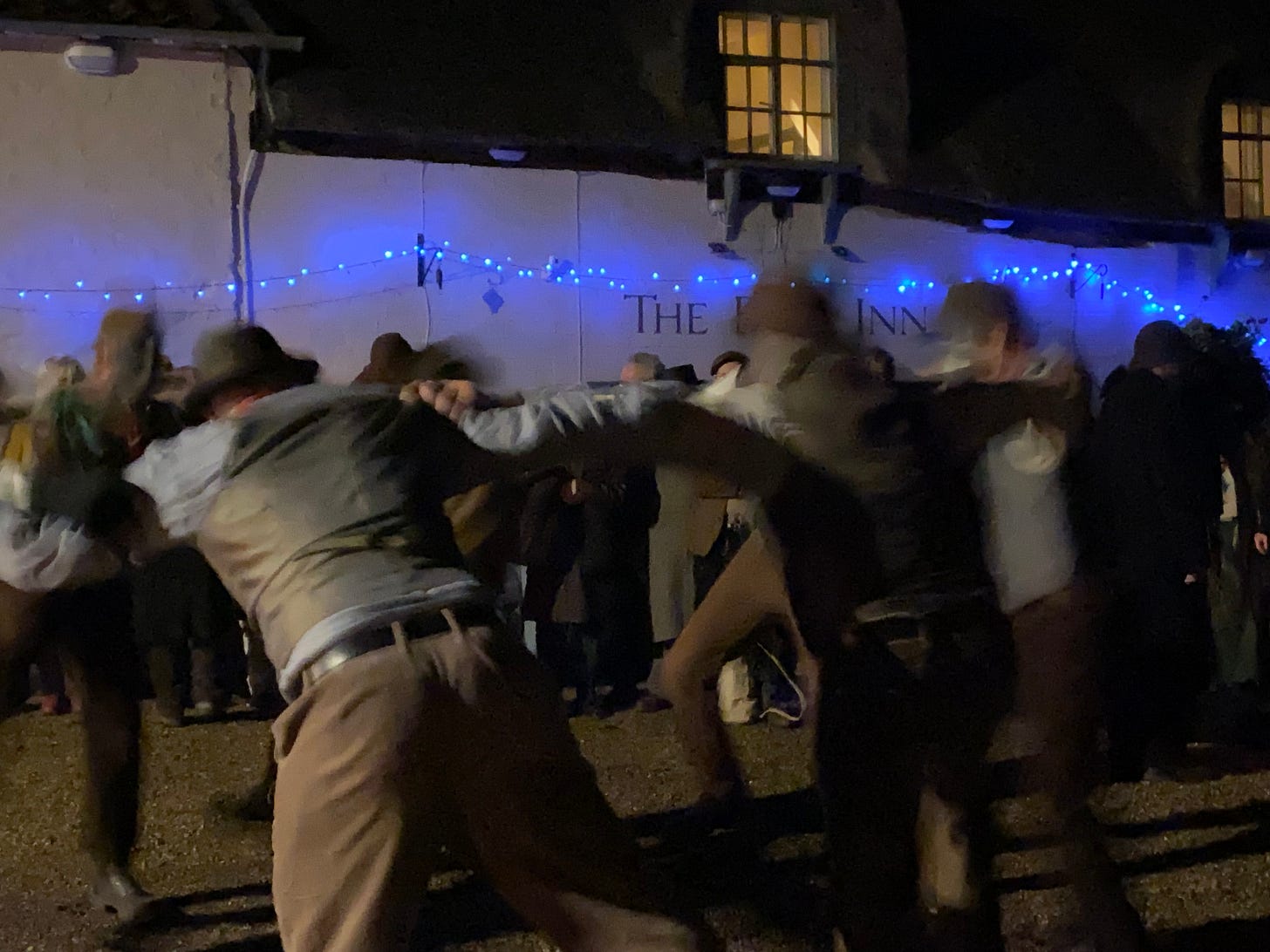

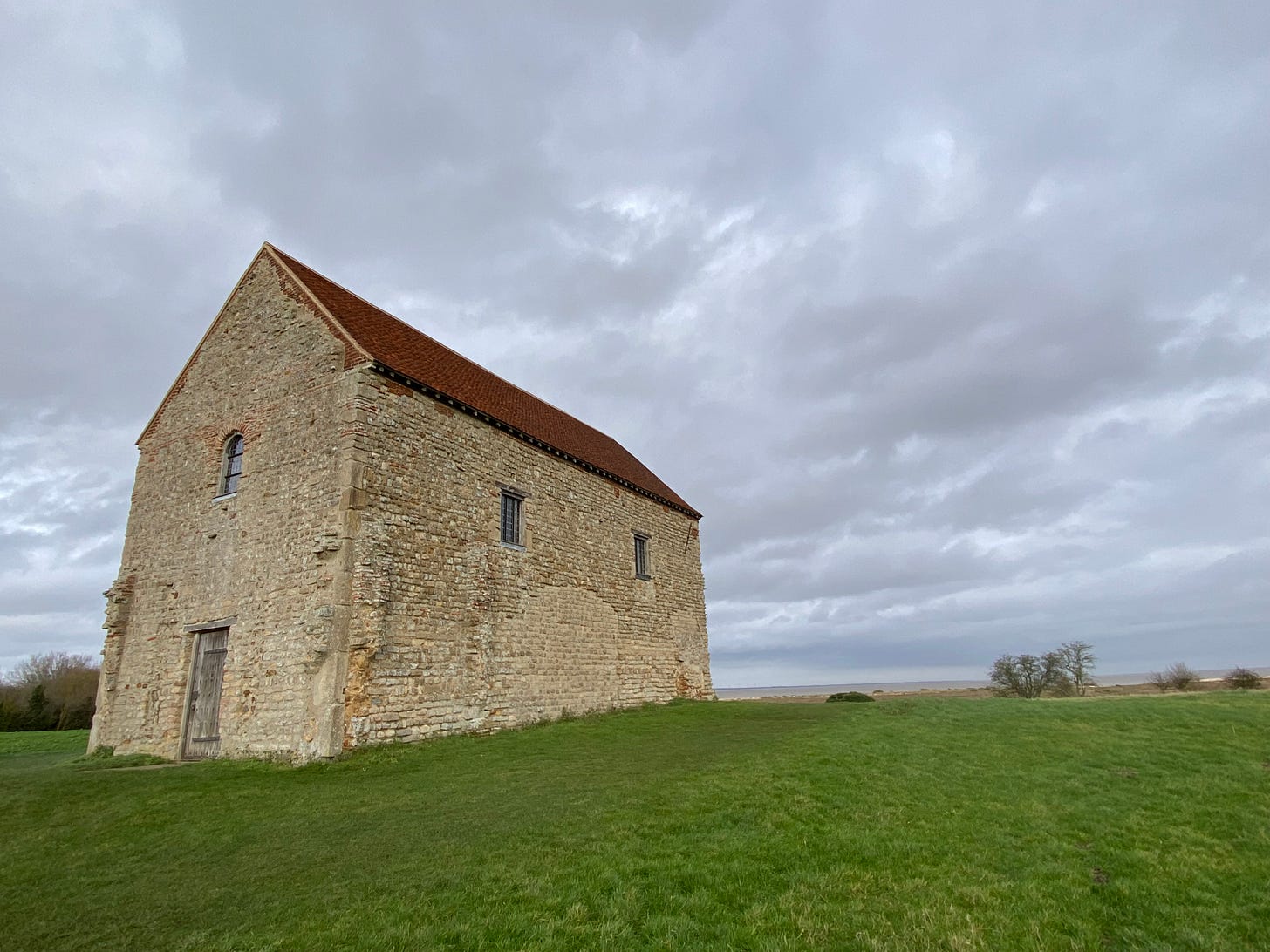
That’s why I love to read it- because I don’t have it here!. I can live vicariously through your posts.
What a fascinating account!